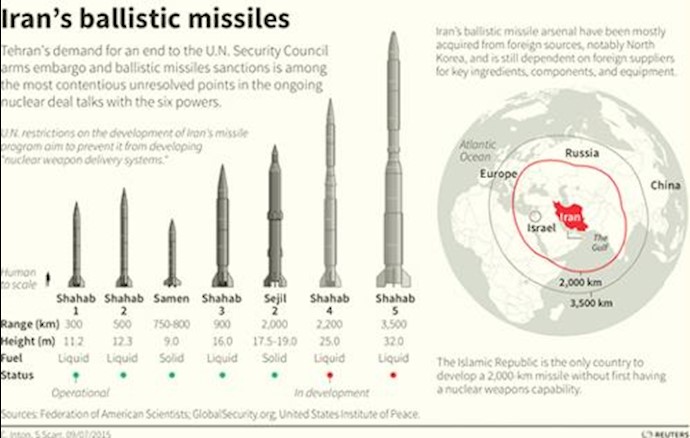Iran’s test of a ballistic missile in October has reignited the bipartisan push-back in Congress against President Obama’s nuclear arms agreement and a call for new sanctions.
Experts from the United Nations confirmed Wednesday that the test of Iran’s “Emad” missile directly violated a UN Security Council resolution that forbids Iran from testing any missile capable of transporting nuclear material.
When confronted by the evidence of violating the ban, Iran’s Defense Minister Hossein Dehgha responded defiantly:
“We tested Emad to show the world that the Islamic Republic will only act based on its national interests and no country or power can impose its will on us.”
While the missile test does not violate the terms of Obama’s nuclear agreement, the obvious disregard for an international sanction renewed misgivings within Congress. That Iran would continue to develop nuclear weapons despite the treaty has been a continuous concern among members of Congress on both sides of the aisle.

The White House’s repeated push to drop sanctions on Iran is now being met with efforts by Republicans to add new sanctions on Iran. And according to Reuters, even some Democrats support “unilateral” action:
Democratic U.S. Senator Chris Coons, a member of the foreign relations panel who backed the Iran nuclear deal, said it was up to the Security Council to act, but if it did not, the United States should, including by imposing direct sanctions on Iranians responsible for the missile tests.
Another Democrat who originally supported the nuclear deal, Rep. Jan Schakowsky (D-IL), expressed concern after the IAEA reported the missile tests:
[The Iranians] “weren’t truthful about that… we need to be on top of what Iran is doing and do everything we can to have full compliance.”
Now the Obama administration has spoken out, under pressure from Congress to address the tests and potential impact on the U.S. relationship with Iran. Stephen Mull, the State Department’s lead coordinator for the nuclear deal with Iran, gave the understated response:
“We are now actively considering the appropriate consequences to that launch in October.”
Besides the concerning disregard for adhering to sanctions, the missile tests may present an ominous secondary concern. Information regarding the Emad missile doesn’t seem to match up.

Reuters also cited a Western diplomatic source as saying the test launch took place near Chabahar. Fox News cited a senior US official as saying the missile was a Ghadr-110 – an improved version of the Shahab-3 – with a range of 1,200 miles (1,930 km).
But Iran claims the missile is brand new with a much longer range, as Jane’s explains:
Iran announced on 11 October that it had tested a new ballistic missile called the Emad and released imagery showing a new steerable re-entry vehicle (RV) on a Shahab-3/Ghadr-series rocket motor. The Emad is designed to make Iran’s existing inventory of medium-range ballistic missiles far more accurate as the RVs would be able to manoeuver towards their targets after they re-enter the atmosphere.
If the tested missile is a new phase of development from Iran, it would be an unprecedented discovery by Western defense intel which already has a large and diverse known inventory. Yet another missile could be a sign of new aggressive behavior, making the concerns of those opposing the nuclear deal potentially more valid.








